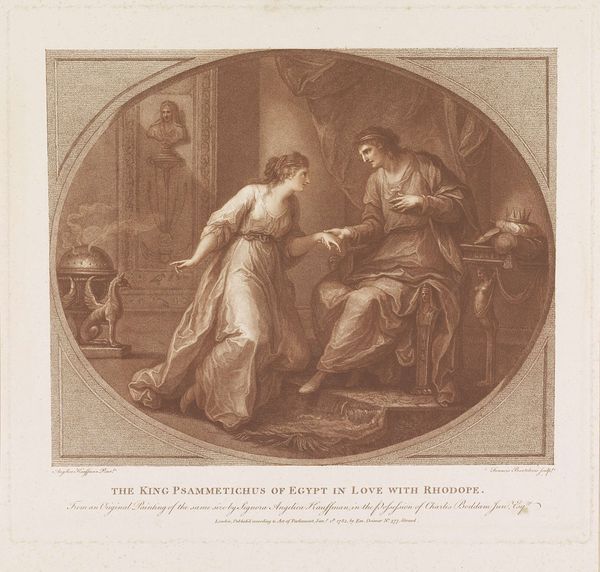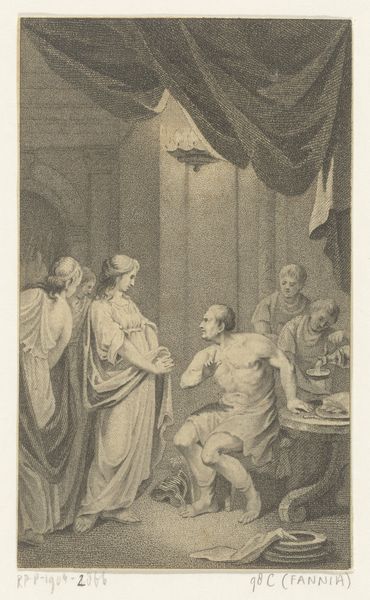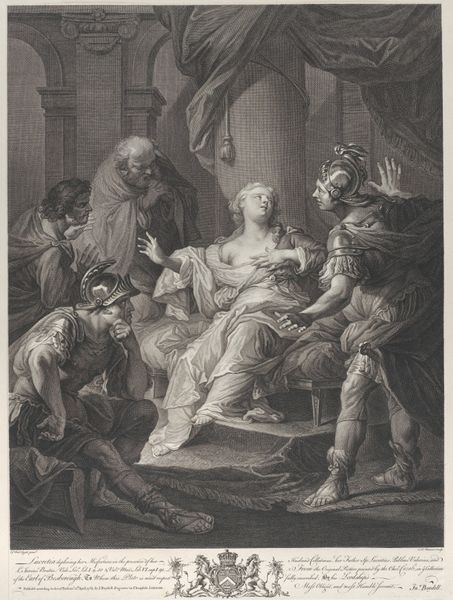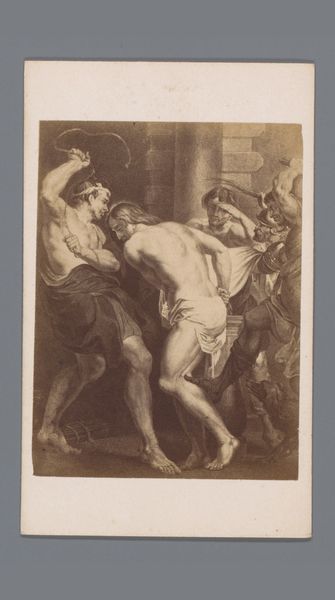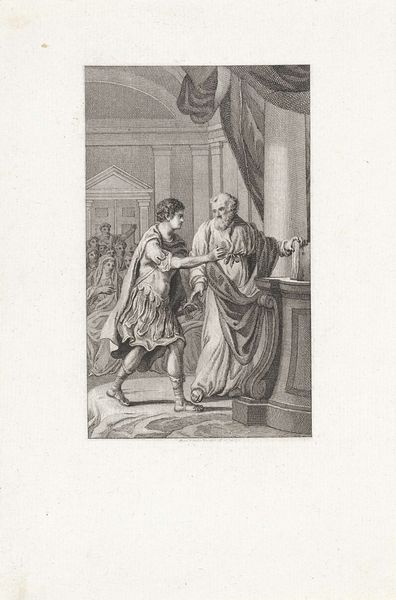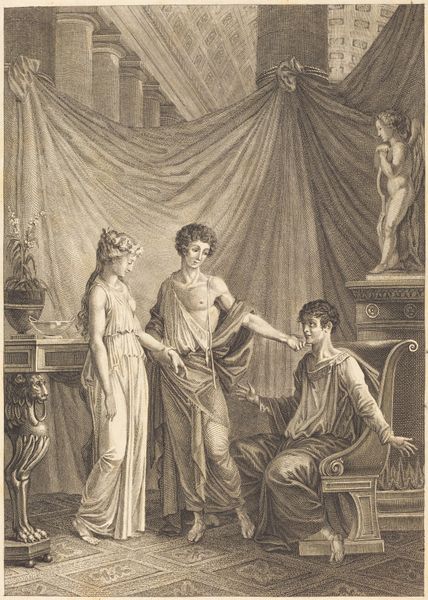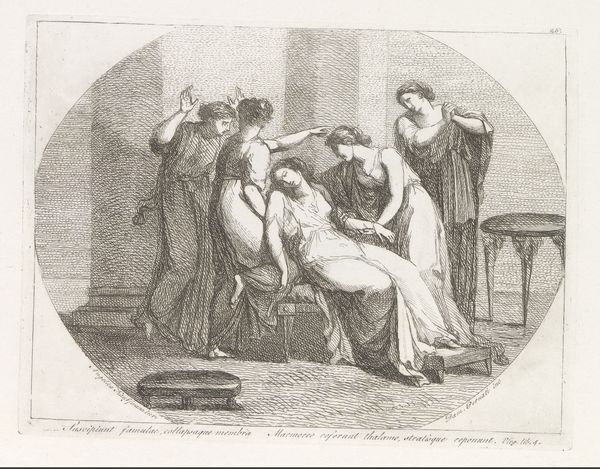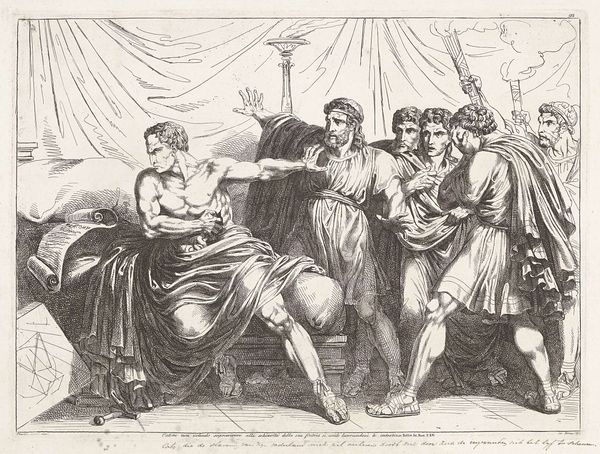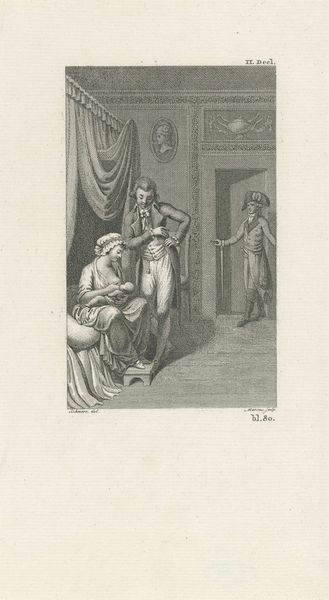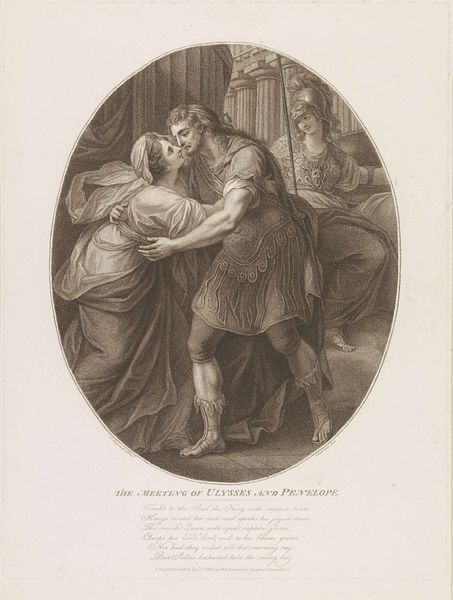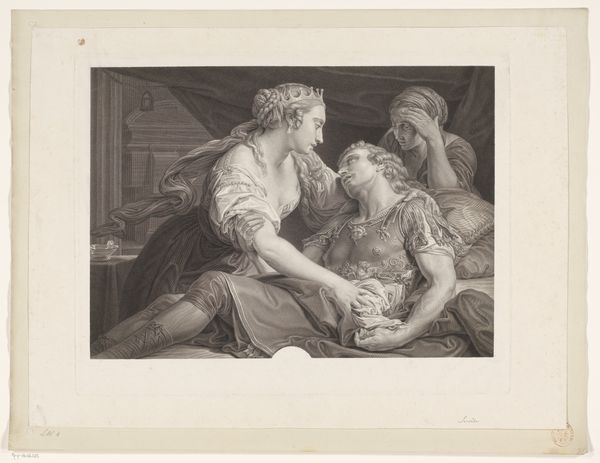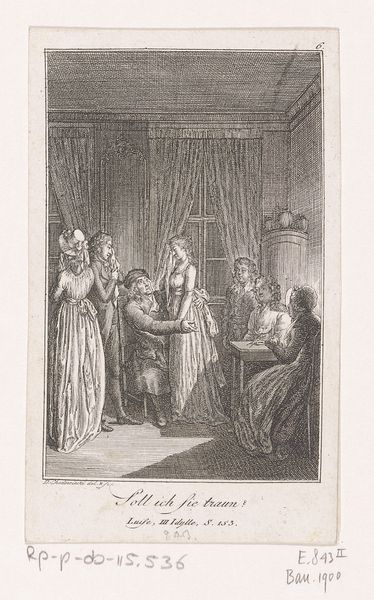
Cleopatra, Eros, Antony, Charmian and Iras (Shakespeare, Antony and Cleopatra, Act 3, Scene 9) 1825 - 1840
0:00
0:00
drawing, print, engraving
#
portrait
#
drawing
# print
#
group-portraits
#
romanticism
#
history-painting
#
engraving
Dimensions: Sheet: 3 7/16 × 2 9/16 in. (8.8 × 6.5 cm)
Copyright: Public Domain
Curator: This print, rendered between 1825 and 1840, is called "Cleopatra, Eros, Antony, Charmian and Iras," and it illustrates a scene from Shakespeare's Antony and Cleopatra. Editor: What immediately strikes me is the contrast in visual density. Look how the closely hatched lines define forms and create areas of light and shadow. There’s almost a chiaroscuro effect, despite the limited tonal range of the print medium. Curator: Precisely! Think about how Shakespeare's play challenges the portrayal of historical women. The artist offers us an interesting interpretation here. Cleopatra isn't just a queen but also a figure burdened by love and political strategy, all vying for expression. It prompts a reflection on intersectional themes within positions of power. Editor: Notice how the architecture itself functions as a kind of grid? The strong verticals and horizontals in the background lend stability to the drama unfolding in the foreground, and yet these architectural blocks almost box in Cleopatra. Curator: That’s a keen observation. The backdrop becomes more than just a setting; it speaks to the socio-political constraints she navigates as a Black queen in a white-dominated world. Even with Eros attending to Antony, the gazes of her attendants reflect the limited freedom of her power. Editor: Semiotically, the draping and flowing of the clothing speak volumes. The way fabric bunches and falls tells you about the light source but also creates diagonals across the composition, injecting movement into what could have been a static, formal scene. Curator: Indeed, those visual components intersect with the themes of colonial ambition, as Cleopatra stands for more than a leader; her depiction also references how historical power dynamics inform her agency. The history of women in politics then extends far beyond Shakespeare's era. Editor: This close reading has certainly clarified the engraving for me. I find the overall construction to be extremely deliberate and refined. Curator: And for me, it's confirmed that appreciating artworks necessitates engaging with their historical context. Looking closely, we are empowered to view it as a complex historical, social, and artistic artifact.
Comments
No comments
Be the first to comment and join the conversation on the ultimate creative platform.

